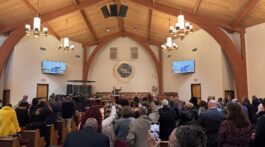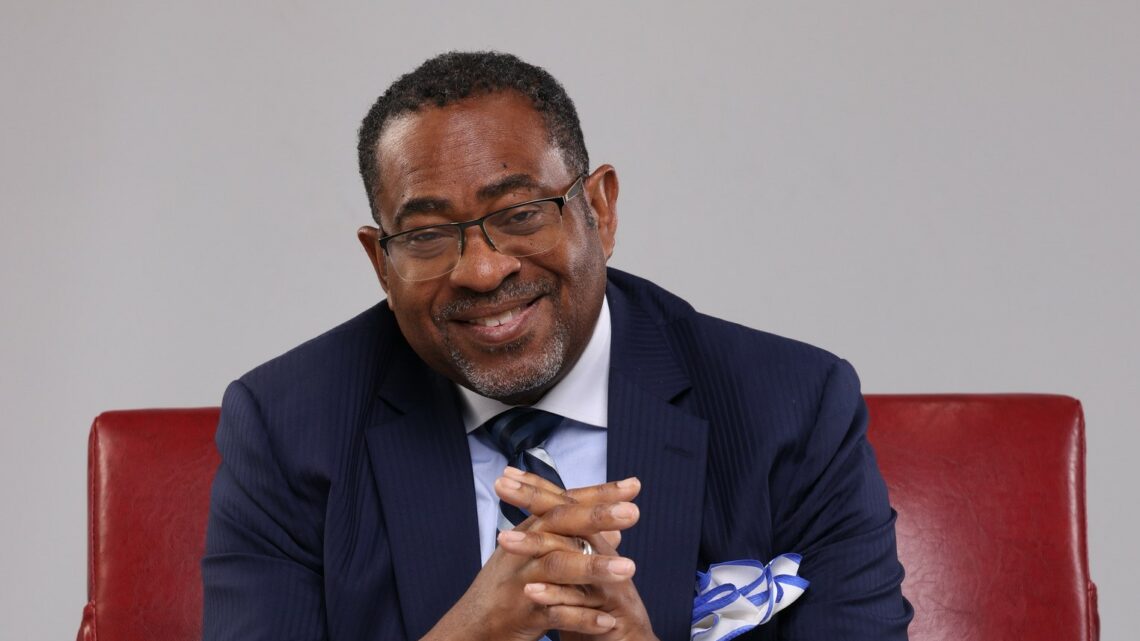Recently I had the opportunity to visit with some friends in their home. After exchanging pleasantries and meeting some family members I was introduced to a young boy about the age of 10. He had a very sad countenance. After some inquiry I was told that the young boy and his sister, who was also present, were orphans.
I immediately reflected upon my own childhood and how happy and carefree I was while growing up on the island of Barbados in the West Indies. I was surrounded by many loving family members, both in my nuclear and extended family. I shuddered at the thought of growing up without loving, caring parents. And I was delighted to observe the adults in the home with this young boy, and to see how tenderly and affectionately they interacted with him. I quickly discerned that despite losing their parents he and his sister did have loving caregivers.
After this encounter I recalled an earlier conversation I had with my friend and colleague, Dr. Pete Palmer, when we discussed the impact of childhood trauma on faith maturity in children and teens. Surely losing not one but both parents constituted a major childhood traumatic event.
I also thought about the many children we interact with during church school, Sabbath school, Vacation Bible School, Adventurers, Pathfinders and other church related activities. How many of these children have experienced some type of trauma? I wondered if we are effectively meeting their needs when they are in our care.
I decided to educate myself a little more and reached out again to Dr. Palmer, who recently successfully defended his Ph.D. dissertation: Childhood Trauma and Faith Maturity of Seventh-day Adventist Pastors and Seminarians. Here is part of our conversation.
Pastor Tyrone Douglas: Dr. Palmer, what types of things constitute a childhood traumatic event?
Dr. Pete Palmer: A traumatic event for a child, according to the American Psychological Association, would be one that threatens injury, death or the physical integrity of self or others. In addition, it also causes horror, terror or helplessness at the time it occurs. Childhood trauma falls under five broad categories. They are abuse, household challenges, neglect, community trauma, and environmental trauma. So, in a practical sense, it would include things like domestic violence, community and school violence, motor vehicle accidents, natural and human-made disasters, suicides, acts of terrorism, war experiences and medical issues. A traumatic event in the life of a child can be a one-time event or multiple recurring events.
Douglas: I read a memorable quote in the information you shared with me earlier. Dr. Robert Block, the former president of the American Academy of Pediatrics, stated that “Adverse Childhood Experiences, referred to as ACE, are the single greatest un-addressed public health threats facing our nation today.” Do we have an idea of what percentage of children experience a childhood traumatic event?
Palmer: There are different estimates of the percentage of children who experience childhood trauma or have at least one ACE. One study estimates it at 61 percent, while another study puts it at 67 percent. So roughly two-thirds of children in America experience at least one traumatic event. One of the most common is the divorce or separation of parents.
Douglas: In children’s ministries and youth ministry our goal is for children to say Yes to Jesus. What is the relationship, if any, between childhood trauma and faith maturity?
Palmer: I cannot say that I discovered a causal relationship between the two. What I can safely say is that when childhood trauma is present the research shows there tends to be a diminishment in faith maturity. I will also add that not all types of childhood trauma are related to diminished faith maturity.
Douglas: What does diminished faith maturity look like in a child or teen?
Palmer: My research showed that childhood trauma seems to have a debilitating effect on developing mature faith. Children who experience certain types of traumas have difficulties forming attachments to caregivers. These insecure attachments can then be projected onto God, who is the ultimate parent or caregiver.
Douglas: What are some other behaviors we should look for as we interact with children or teens who may have experienced one or more ACEs?
Palmer: Young children may exhibit excessive fear of strangers, separation anxiety, have trouble eating and sleeping. School age children may engage in aggressive behavior, become withdrawn, fixate on their own safety or the safety of others, have frequent nightmares, exhibit difficulty concentrating in school, and re-enact the traumatic event through play. Adolescents may become anxious or depressed, engage in self destructive behaviors like drug and alcohol abuse, dangerous driving, sexual promiscuity and illegal activity. Some teens experience intense guilt, shame, anger and develop a negative view of people and society. It is not uncommon for some teens to be suicidal and harbor thoughts of revenge.
Douglas: What advice would you give to parents, teachers and others who work with children and teens, in faith-based settings, that would make a difference in bringing healing to those who have experienced trauma?
Palmer: First, recognize that trauma-informed care is not the sole province of mental health professionals. The need for evidence-based trauma treatment is critical for the healing of children and teens who need it, but it is not the only way to provide trauma-informed care. There is a role to play for all the programs and service systems in our churches. Our churches should be trauma-informed spaces that are intentional about not re-traumatizing individuals who have experienced childhood trauma. Trauma-informed pastors and congregations protect individuals from further trauma that can interrupt their healing. With a commitment to trauma-informed care and training, our churches can become healing communities for those who have suffered childhood trauma.
Douglas: Dr. Palmer, thank you for sharing your insights on this very important topic. As a faith community we are all on a journey of healing from the consequences of sin. We look forward to the day when all childhood traumas will be a thing of the past.
Until then, let us as a community of faith do our best to advocate for our young children, adolescents and teens while protecting and providing spiritual care. It is my hope that our churches will be safe, supportive and well-informed places of healing for all our children.







